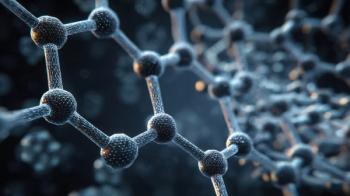
- The Column-06-20-2016
- Volume 12
- Issue 11
ChromSoc’s Lake District Lectures for Students
The Chromatography Society is holding a four-day educational event in the Lake District from 14–17 October at the Wordsworth Hotel in Grasmere. Aimed at post-graduate students and novice chromatographers, the event will focus on the fundamentals of liquid chromatography and its practical application in industry and academia.
The Chromatography Society is holding a four-day educational event in the Lake District from 14–17 October at the Wordsworth Hotel in Grasmere. Aimed at post-graduate students and novice chromatographers, the event will focus on the fundamentals of liquid chromatography and its practical application in industry and academia.
“We are very much looking forward to welcoming delegates to the Lake District for this event, which will comprise approximately 20 hours of lectures, together with walking activities and a number of evening events,” said Dr Paul Ferguson, President of The Chromatographic Society.
Expert chromatographers from across industry and academia will be delivering a number of lectures at the event including Professor Mel Euerby from Shimadzu, Tony Taylor from Crawford Scientific, Professor Tony Edge from Agilent, Dr John Lough from the University of Sunderland, and Dr Paul Ferguson from AstraZeneca.
“The lecture programme itself will be ‘fixed’ content, but there is considerable scope to include additional topics as requested by attendees in the initial session and informal discussion during walks. We look forward to a successful and productive weekend,” continued Ferguson.
A range of funding is being provided for the event with chromatography companies providing full funding for a limited number of UK-based post-graduate researchers. Furthermore, The Chromatography Society is also providing bursaries and industrial bursaries for chromatographers working in small and medium sized companies.
“We welcome further interest from companies wishing to sponsor post-graduate students (MSc and doctoral) to attend this event,” added Ferguson. “This is an excellent opportunity to help develop the chromatographers of the future.”
For further course details and registration, please visit:
For sponsorship and other queries, please contact:
Articles in this issue
over 9 years ago
Evaluating the Potential of HPLC with IMS-MS for Metabolomicsover 9 years ago
Smelling Arthritisover 9 years ago
Vol 12 No 11 The Column June 20, 2016 Europe and Asia PDFover 9 years ago
Vol 12 No 11 The Column June 20, 2016 North American PDFover 9 years ago
Leap Technologies and Antec Announce HDX–MS Ventureover 9 years ago
Celebrating the Career of Professor Klaus K. Ungerover 9 years ago
Are there any Holy Grails left in Chromatography?Newsletter
Join the global community of analytical scientists who trust LCGC for insights on the latest techniques, trends, and expert solutions in chromatography.




